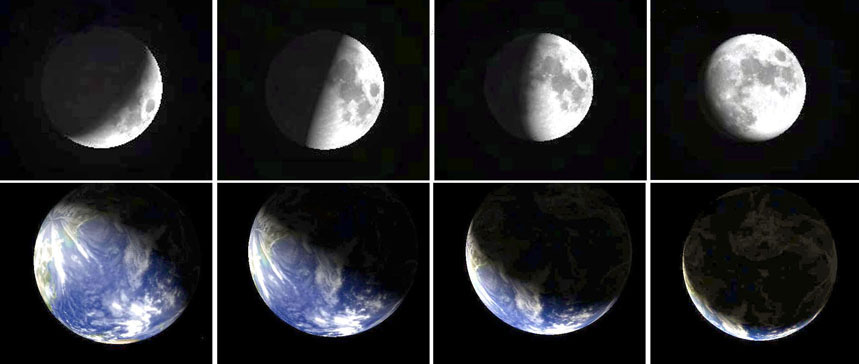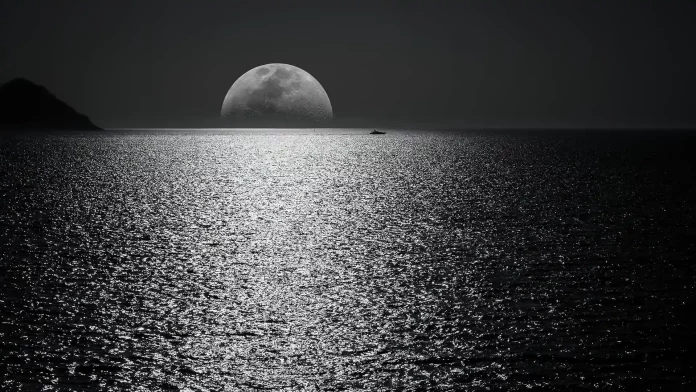Moon’s Other Face – A Scientific Research on Space Technology
Moon’s other Face Highlights:
- Whats there over Moon’s other Face?
- How earth saw the Moon’s other Face?
- The captivating tale of the moon’s evolution and history.
- The Scientists continue to unravel the mysteries of the Moon’s other Face.
Moon’s other Face Is moon’s other face also the same as the face we always see? When we look at the moon from Earth, we can see only one of its faces. When evert writers, poets, and lovers have always viewed the moon from a particular perspective. We have all seen her beauty compared to innocence. We have all read wonderful poems written by poets about the moon’s beauty. Followers of Confucius say that everything in the world has two sides. The moon is no exception.

Sixty years ago, we did not even know what the surface of the far side of the moon was like. We could only see the near side of the moon, but when we finally obtained images of the far side, scientists were astonished by the difference between the two sides.
Scientists have been searching for the answer to the question of why the two sides of the moon are so different for 60 years. Now, they believe they have found the answer. However, as we know, nothing is ever final in science.
The first question is why we always see only one surface of the moon. The moon revolves around the Earth, but it also rotates on its axis. The moon’s rotation is tidally locked to its orbit, meaning that it takes the same amount of time for the moon to rotate once on its axis as it does to orbit the Earth. As a result, we always see the same side of the moon.
If we divide the sphere of the moon into two parts, the surface which is visible to us from the Earth is called the near side, and the moon’s other Face which is never visible to us with our naked eyes is called the far side.
It is correct to say that we had never seen the far side of the moon from Earth until 1959. The Cold War between Russia and the United States flared up after World War II. This rivalry extended into space, leading to a period of intense competition known as the Space Race. Both superpowers made significant contributions to space exploration during this time.
In 1959, the Soviet Union launched Luna 3, an unmanned spacecraft that was designed to photograph the far side of the moon. Luna 3 successfully captured the first images of the far side, revealing a surface that was very different from the near side.
The scientific community was surprised by the stark contrast between the two sides of the moon. The near side is dominated by dark, maria plains, while the far side is much more heavily cratered. The image captured by Luna 3 was not very clear. In the years that followed, the United States and the Soviet Union launched more space missions with more advanced cameras that produced clearer images.
After studying these clear images, scientists concluded that the two surfaces of the moon are very different from each other. The biggest question that arises is why the two surfaces are so different.
First, let us understand the differences between the two surfaces.
The near side of the moon, which is visible from Earth, is dominated by large, dark areas called maria. The far side of the moon is much more heavily cratered. The craters on the far side of the moon are formed by impacts from asteroids and comets. The maria on the near side of the moon are formed by volcanic eruptions.
The chemical composition of the maria is different from the chemical composition of the highlands on both the near and far sides of the moon. The maria are enriched in elements such as iron, titanium, and potassium. The reason for the difference in composition between the near and far sides of the moon is still a matter of debate. One possibility is that the moon was impacted by a large object early in its history. This impact would have caused the maria to form on the near side of the moon.
Another possibility is that the maria formed as a result of volcanic activity that was more intense on the near side of the moon than on the far side. Scientists are still working to understand the reasons for the differences between the near and far sides of the moon.
As per a new scientific research on space technology where Scientists have been trying to determine the reason for the absence of PKT elements on the far side of the moon for many years. They have proposed a number of theories to explain this discrepancy.
One theory is that the Earth’s gravity may have played a role. The Earth’s gravitational pull may have shielded the near side of the moon from impacts from asteroids and comets.
However, this theory is not very likely because the Earth is much smaller than the moon and is located a great distance away. Another theory is that the moon’s own internal heat may have played a role. The near side of the moon is tidally locked to the Earth, meaning that the same side of the moon always faces the Earth.
This tidal locking may have caused the near side of the moon to be warmer than the far side. The warmer temperatures on the near side may have caused the PKT elements to migrate to the surface.
Scientists are still not sure why the near and far sides of the moon are so different. However, they continue to study the moon in order to learn more about its history and evolution.
First Theory:
In this theory it is said that there is a difference between the front and back surface of the moon. Hence there is a difference in their volcanic processes also. For example, the outer surface of any planet or satellite is called crust. So this theory says that the front surface of the moon is very thin and hence the effect of volcanic process is more there.
So why is the front surface of the moon so thin? What is the reason behind this? When the Earth and the Moon were forming, they were very hot and volcanic processes were occurring on both the Earth and the Moon. When this process ended, they gradually cooled over millions and millions of years.
But the surface of the Moon that faced the Earth was constantly receiving heat from the Earth, while the back surface of the Moon was not receiving heat from anything and cooled quickly. Therefore, more volcanic activity occurred, which thinned the Moon’s posterior surface. And this is the reason why there is a lot of difference between the front surface and the back surface of the moon.
Second Theory:
A paper published in Science Advances on April 8, 2022, offers a second refinement. This paper demonstrates a link between the volcanic activity on the Moon’s nearside and a massive crater on the farside. The crater in question is the South Pole-Aitken Basin, which is the largest known impact crater in the Solar System.
The theory posits that when a large meteorite struck the Moon and formed the South Pole-Aitken Basin, it generated a tremendous amount of heat. This heat would have spread throughout the Moon’s interior. Scientists have used computer simulations to model this process.
The simulations show that the spreading heat would have carried certain chemical elements towards the Moon’s nearside. These elements would have then played a role in promoting volcanic activity.
The biggest difference between this theory and the first theory is that the second theory is based on computer simulations and multiple lines of evidence. As a result, the second theory is considered to be more credible than the first theory.
However, both theories highlight the significant difference between the Moon’s nearside and farside. Blog By Outreinfo

